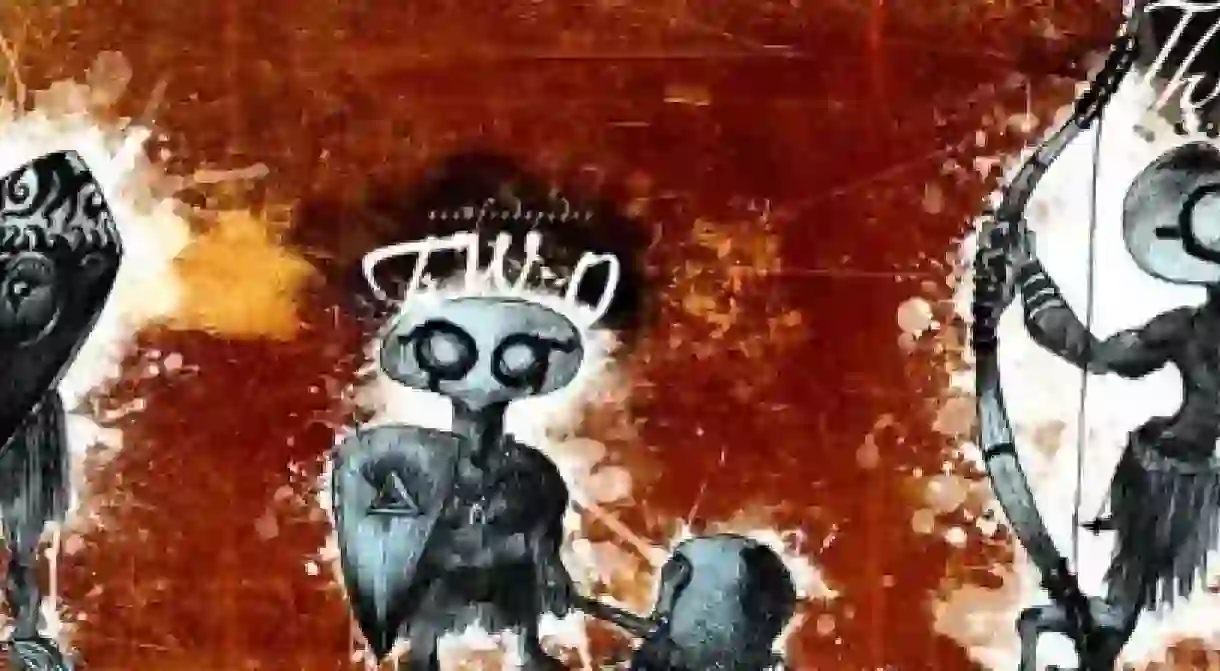Jepchumba: The Pioneer Of African Digital Art

Digital art, from illustrated vector-drawings to CGI, animation, and 3D modelling, is taking the world by storm with entire galleries dedicated to the medium. The movement is rising in Kenya – the most technologically advanced country in West Africa, and the birthplace of the virtual African Digital Art project led by pioneer digital artist, Jepchumba. We find out more.

A man is seated in lotus position, face wretched and eyes cast down as the purple sky churns above him. This is an image created by Jepchumba, the founder and director of African Digital Art.
Jepchumba describes the project as an “online collective of artists and digital enthusiasts.” In an interview with Max Eternity, she tells of how it emerged from a need for “more visibility of Africa’s talent in the digital media industry.”
Originally from Kenya, Jepchumba takes inspiration for her work from the places she has lived and worked, including Mount Holyoke college in the United States and Cape Town, South Africa. In 2012, she was listed by Forbes as one of the “20 Youngest Power Women in Africa,” and was listed on The Guardian Africa’s “Top 25 Women Achievers.”
Yet, Jepchumba is far from the only voice of digital art in Africa. Others have flocked to the site to submit their work and to share their experience and skills with others keen to see African art in action. In addition to displaying work on the website, the website is a great tool for artists working around the continent. Organized by region, the site presents a comprehensive directory of art spaces available for artists to rent. These include the townhouse gallery in Cairo and Picha Gallery in the Democratic Republic of Congo.
There are over 1,000 subscribers to the African Digital Art site, and the users are active – frequently posting comments and sharing content. Artist Nandipha Mntambo dissects and discusses her picture On cowhide, femininity and vulnerability. In the piece she has used her digital tools and art to explore “the physical and tactile” properties of hide. She used cowhide to subvert expected “associations with the corporeal vulnerability of the female body,” and challenge preconceptions of the female body. The image, which shows a slim woman dressed like a matador stepping out into a bullring, challenges the viewer to question if a mistake has been made and whether or not that person should perhaps be a man.
Another example is digital photographer Osborne Macharia, who is based in Nairobi and shoots fashion and landscape photography. His work is typified by strikingly colourful images of people of people in the foreground, with a more muted tonality to the background. One image shows two women wearing orange and blue and standing on a sandy, grey ground. The colours are sharp, and the entire image is wonderfully focused.
Many artists, although producing work that’s internationally recognised and celebrated, focus on issues that are specific to the African continent. For example, one photographic project examines the subject of Mosquito Nets and the Fragility of Life, which underscores an issue particularly relevant to sub-Saharan Africa.
Another project touches upon the issue of apartheid. In the photo essay Nostalgia, Memory and Belonging, Thabiso Sekgala “records on film and slows time down, the changes in South Africa since democracy and also the nostalgia that South Africa holds for the past.”













